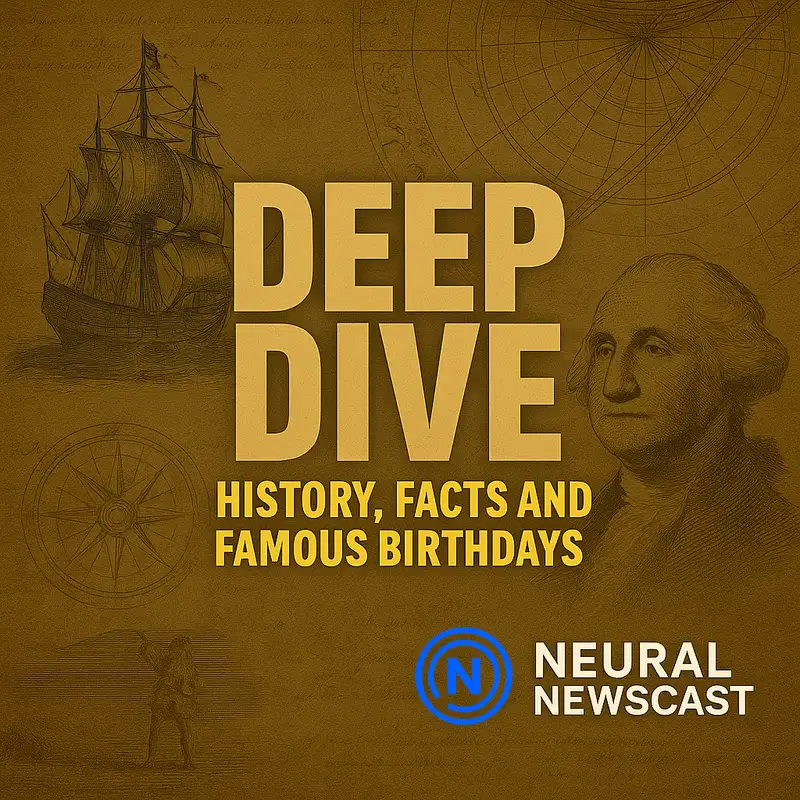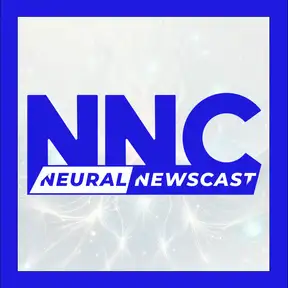Deep Dive: Oswald in Custody, Spinoza’s Reason, and the Lion’s Mating Marathon - November 24, 2025
From AI-generated insights to human-reviewed accuracy, this is Neural Newscast, keeping you informed every day.
Get ready for a deep dive from Neural Newscast.
I'm Benjamin Carter, your innovation specialist, joined by Laura Navarro, our health correspondent.
Let's dig into today's stories.
On this day in 1963, Lee Harvey Oswald, the accused assassin of President John F. Kennedy,
was shot and killed in the Dallas Police Headquarters basement as cameras rolled.
That moment, Oswald killed in custody by nightclub owner Jack Ruby, sent shockwaves through a nation already reeling from Kennedy's assassination, and it reshaped public perception of the investigation almost overnight.
It crystallized a tension between orderly legal process and raw televised drama.
Seeing a suspect in a monumental crime killed on live TV felt like the story closing on itself, before a full accounting could even begin.
Exactly. It raised unresolved questions about accountability and the integrity of institutions tasked with safeguarding suspects and evidence.
Due process, chain of custody, all under extraordinary pressure.
From an innovation lens, it showed how rapidly media technology, real-time broadcasts, instant photos,
can shape public understanding as events unfold, sometimes outpacing confirmed facts and official narratives.
And from a health and safety perspective, the killing of an accused shooter in custody exposed vulnerabilities in security protocols,
especially during high-profile transfers where crowd control and access are hard to manage.
The rawness of that day left an imprint on public trust and on how future high-profile cases would be managed and covered.
It became a playbook reference for crisis handling under intense media scrutiny.
It also lingered in the national psyche.
The assassination followed by the suspects killing amplified grief and uncertainty,
reshaping conversations about closure, justice, and what accountability should look like.
Beyond the immediate legal fallout, it influenced how newsrooms and authorities planned custody transfers and media access,
tighter perimeters, credentialing, rehearse routes, more structure when stakes are highest.
And societally, the incident reinforced the need for transparent, careful investigation processes to help communities heal after traumatic events, a reminder that clarity is part of recovery.
Those few minutes in Dallas, the moment Jack Ruby shot Oswald as cameras captured it,
kept the public asking hard questions and drove changes in how such moments are handled and reported ever since.
A stark reminder of how quickly events can escalate,
and how crucial it is to balance swift action with procedures that protect investigations and public trust.
Those lessons are still studied today.
Music
More deep dive ahead. Next up, a few birthdays that shape the world.
Today we celebrate the birthdays of Baruch Spinoza, 1632, Zachary Taylor, 1784,
and Harid at Toulouse-Latrec, 1864.
I love that lineup. Three very different worlds, philosophy, politics, and art,
each with a lasting footprint. Which one do you want to dig into?
Let's focus on Baruch Spinoza.
His ideas feel strikingly modern, and as someone who watches how ideas seed innovation, his
reason-driven ethics read like proto-systems thinking.
Absolutely.
From a health perspective, his emphasis on understanding emotions through reason resonates with wellness
today, how we frame feelings shapes well-being.
He reframed the nature of God in the universe toward natural laws rather than supernatural intervention,
giving us a vocabulary for cause, effect, and human agency that still underpins modern inquiry.
That shift matters personally and publicly.
When emotions and actions are seen as part of a comprehensible system,
it opens doors to intentional change, therapy, public health strategies,
and policies built on predictable outcomes.
There's also an entrepreneurial parallel.
He pushed against received authority, championed freedom of thought, and trusted rational inquiry,
traits you see in startup cultures challenging incumbents.
And despite excommunication and a modest life, he produced work that became foundational.
Resilience and focus scholarship were his tools,
encouragement for anyone doing long-term incremental work.
A lesser-known spark, his geometric method in ethics, arguing axiomatically, treated philosophy like a formal system.
It's a precursor to the formal modeling and verification we use in tech.
And it makes his ethics surprisingly practical.
By mapping how emotions arise, he offered routes to mental clarity.
It reads like an early blueprint for cognitive reframing.
He made secular philosophy feel like infrastructure.
If natural laws and reason are the base layer, you can build on top of it, political systems, science, even tech ethics.
Which brings us to legacy. Spinoza's influence stretched far beyond his century, shaping debates about freedom, democracy, and human flourishing. His relevance endures.
Exactly. His work still asks, how do we design systems, social or technological, that align with human nature rather than fight it?
Innovators keep circling that question.
And for health communicators, his insistence on clarity and reason is a reminder.
Explaining why things happen can be as therapeutic as treating symptoms.
Education is preventive care.
Spinoza is a timeless icon. He retooled the intellectual scaffolding we still use,
Hard to overstate his role in ushering Western thought toward modernity,
and quite the birthday club alongside Taylor and Toulouse-Latrec.
Agreed.
His ideas keep nudging us toward more humane, rational ways of living together.
Definitely worth celebrating on his birthday.
We'll be right back after this short break.
Thanks for listening to NNC Neural Newscast.
This is Chad Thompson, the founder of Neural Newscast.
If you want to go deeper, we've got more stories and context waiting for you at our website,
neuralnewscast.com.
Welcome back to Neural Newscast Deep Dive. Time for the fact of the day.
Some lions made over 50 times a day.
That number jumps out. It's an intense rate.
And it typically happens during a brief estrus period when timing matters most.
Exactly. From a patterns and cycles view, it's a concentrated high-frequency burst of activity aimed at maximizing successful mating over a short window.
Biologically, that frequency signals a targeted reproductive strategy.
Short window, repeated attempts to ensure fertilization.
Right, nature's relentless optimization, many repetitions to boost the odds of success in limited time.
And that repetition implies a physical toll in serious stamina, especially as the cycle can stretch over several days.
It paints a vivid scene, intense, purposeful and laser-focused on reproductive success, all at a rapid pace.
For anyone curious about animal behavior, it shows how varied strategies can be.
Some are brief and intense like this, others more spaced out.
A reminder that evolution offers many solutions to the same problem.
Here, repetition is the path to maximizing fertilization chances.
That single line invites deeper questions about energy budgets, timing, and reproductive pressure in the wild.
Absolutely, concise, surprising, and a great prompt to rethink assumptions about animal
mating behaviors.
Agreed.
It's a small fact with big insight into natural strategies and endurance.
We hope you enjoyed this deep dive.
For Benjamin and all of us at Neural Newscast, I'm Laura Navarro.
Join us next time.
Thanks for tuning in to Neural Newscast.
Stay curious, stay informed, and visit NNewscast.com
for more daily news and fascinating stories from history.
At Neural Newscast, we mix real voices with AI-generated ones
to bring you fast, high-quality news.
Every story is created with AI but reviewed by humans
to keep things accurate and fair.
While we do our best to prevent mistakes,
AI isn't perfect.
So double-check key facts with trusted sources.
Want to know more about our AI process?
Head to endnewscast.com.
Creators and Guests


